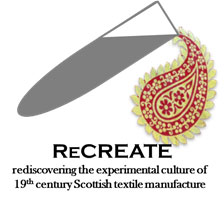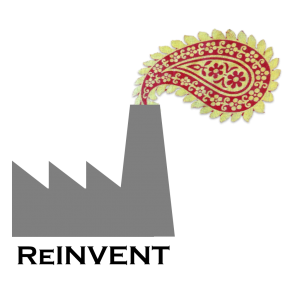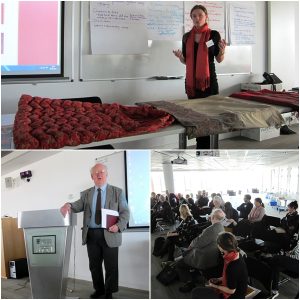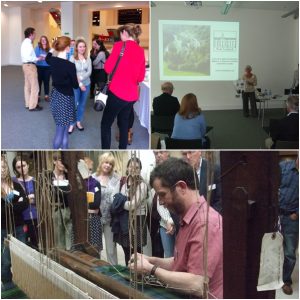ReINVENT & ReCREATE

ReCREATE is a multidisciplinary research network to rediscover and reconnect the tools, materials, laboratory and workshop environments, manufacturing skills and experimental practice that Scotland used to make colourful decorative textiles in the Industrial Revolution.
Building on successes from the interdisciplinary knowledge exchange network ReINVENT, ReCREATE develops and strengthens links between academic and heritage sector researchers in the sciences, arts, and humanities through four innovative networking meetings where the collaborators examine and discuss historical materials, tools & equipment, textiles, and documents now in museums, archives and trusts.
Knowledge exchange between the collaborators and invited specialists from the UK and Europe will inform and inspire reconstructive research for making decorative textiles, and contextualise the international significance of Scotland’s experimental culture before and during the Industrial Revolution. The network partners will ultimately share their expanded understanding through a public conference, and also scope collaborative research partnerships between the academic and heritage sectors to rediscover Scotland’s forgotten story of textile manufacturing innovation.
Find out more on the project website.
The details for the ReCREATE public event in June 2015 available here.
Info about the different activities will follow soon.

Public Seminar
Workshops
- introductory talks from two collaborators and talks by one invited speaker to stimulate discussion and ideas,
- breakout sessions to explore ideas and knowledge relating to the practicalities of manufacturing and (potential) reconstructions
- group discussion
- conclusions including topics for connected discussion in the next workshop or the seminar
- connections between historical nineteenth century Scottish textiles, and the scientific and technical developments of the Scottish manufacturing industries in the Industrial Revolution;
- past methods and materials of textile production to inform the preservation and interpretation of historical collections today;
- effective and targeted ways to contribute wanted knowledge and understanding about Scotland’s industrial heritage.

Materials and supplies for textile production – University of Glasgow (Sir Alwyn Williams Building).
The textile industry relied on supplies of yarns and fabrics, techniques for weaving and processing fabrics, and chemicals for preparing, bleaching, dyeing, printing and finishing. What was available? What was needed? What production stages were necessary to make or prepare the supplies?
- Workshop Summary Report by Dr Sally Tuckett

Where would these come from? Could they have been made in Scotland? What materials would they have been made from?
- Programme
- Workshop Summary Report by Linda Ross
- Main Sources of Machinery in the Scottish Textile Industry by Mark Watson, Historic Scotland

- Workshop Summary Report by Elsa Davidson
On Saturday 7th December a Public Workshop will be held for the ReINVENT project at Maryhill Burgh Halls from 10am. This special free one day public event in Glasgow celebrates the culmination of the project by sharing what we already know and, as importantly, what we don’t. By bringing together a wide range of local historians, museum curators, conservators, academic scholars, students and interested individuals, we anticipate a stimulating and stimulated interchange of ideas and understanding.
Come join us at the wonderful Maryhill Burgh Halls to hear about the impact and legacy of Turkey red, Paisley shawls and the Greenock rope works, and enjoy the opportunity to see historical artefacts and archives up close.
ReINVENT is generously funded by a Knowledge Exchange Network grant by Royal Society of Edinburgh and Scottish Government. Please visit the University of Glasgow and STICK’s websites for more information.

